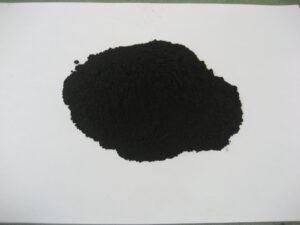Everything You Need to Know
Understanding Gilsonite and Its Potential Toxicity
Gilsonite, also known as natural bitumen or asphalt, is a naturally occurring mineral primarily found in the United States. It is a black, shiny substance that is highly valued in industries such as construction, ink manufacturing, and oil and gas drilling. However, a common question arises when dealing with this material: Is Gilsonite toxic?

In this article, we will explore the potential health risks, environmental impact, and industrial usage of Gilsonite, giving you a clearer understanding of whether it poses a threat to human health or the environment.
https://iranmineral.net/industrial-benefits-of-gilsonite/
What Is Gilsonite Used For?
Gilsonite has a wide range of industrial applications, which makes it an essential material in various sectors. It is primarily used for:
- Ink Manufacturing: Gilsonite acts as a resin in the production of printing inks and paints, providing durability and gloss.
- Oil and Gas Drilling: It is commonly used as an additive in drilling fluids to seal the wellbore and prevent fluid loss.
- Road Construction: As a component in asphalt, Gilsonite enhances the durability and flexibility of roads, making them more resistant to cracking.
- Foundry and Castings: In foundries, Gilsonit is used to improve the quality of castings by controlling the mold’s gas permeability.
Given its broad usage, it’s important to understand whether Gilsonite poses any risks to human health.
Is Gilsonite Toxic to Humans?
Health Concerns for Workers
The primary concern surrounding Gilsonite’s potential toxicity is related to occupational exposure. Workers who handle Gilsonit regularly—such as those in manufacturing, construction, or mining—may be exposed to airborne dust particles.
While Gilsonit itself is not classified as toxic, prolonged or excessive inhalation of its dust may irritate the respiratory system. The key health risks include:
- Respiratory Issues: Inhaling large amounts of Gilsonit dust over time may lead to respiratory conditions such as chronic bronchitis.
- Skin and Eye Irritation: Direct contact with Gilsonit may cause mild irritation to the skin or eyes, though it is generally considered low risk in these areas.
Regulatory Classification
Gilsonit is not classified as a hazardous substance by the Occupational Safety and Health Administration (OSHA) or the Environmental Protection Agency (EPA). However, as with many industrial materials, safety protocols should be followed to minimize exposure to dust particles and fumes during processing.
Environmental Impact of Gilsonite
Gilsonit is a naturally occurring substance, which means it is biodegradable and not considered harmful to the environment in its raw form. However, when used in industries like oil and gas drilling, there is the potential for environmental concerns related to the byproducts of the processes that involve Gilsonit.
While the substance itself is relatively safe, improper disposal or spills of products containing Gilsonite could have localized environmental impacts, especially in water sources. Ensuring proper handling and disposal practices mitigates most environmental risks.
Safety Measures for Handling Gilsonite
Personal Protective Equipment (PPE)
To reduce the risk of exposure, workers who handle Gilsonit should wear appropriate personal protective equipment (PPE). This may include:
- Dust masks or respirators to avoid inhaling fine particles.
- Gloves and protective eyewear to prevent skin and eye irritation.
Ventilation and Dust Control
Workplaces that process or manufacture products with Gilsonit should implement proper ventilation and dust control systems. This helps limit airborne particles and reduces the risk of respiratory issues for workers.

